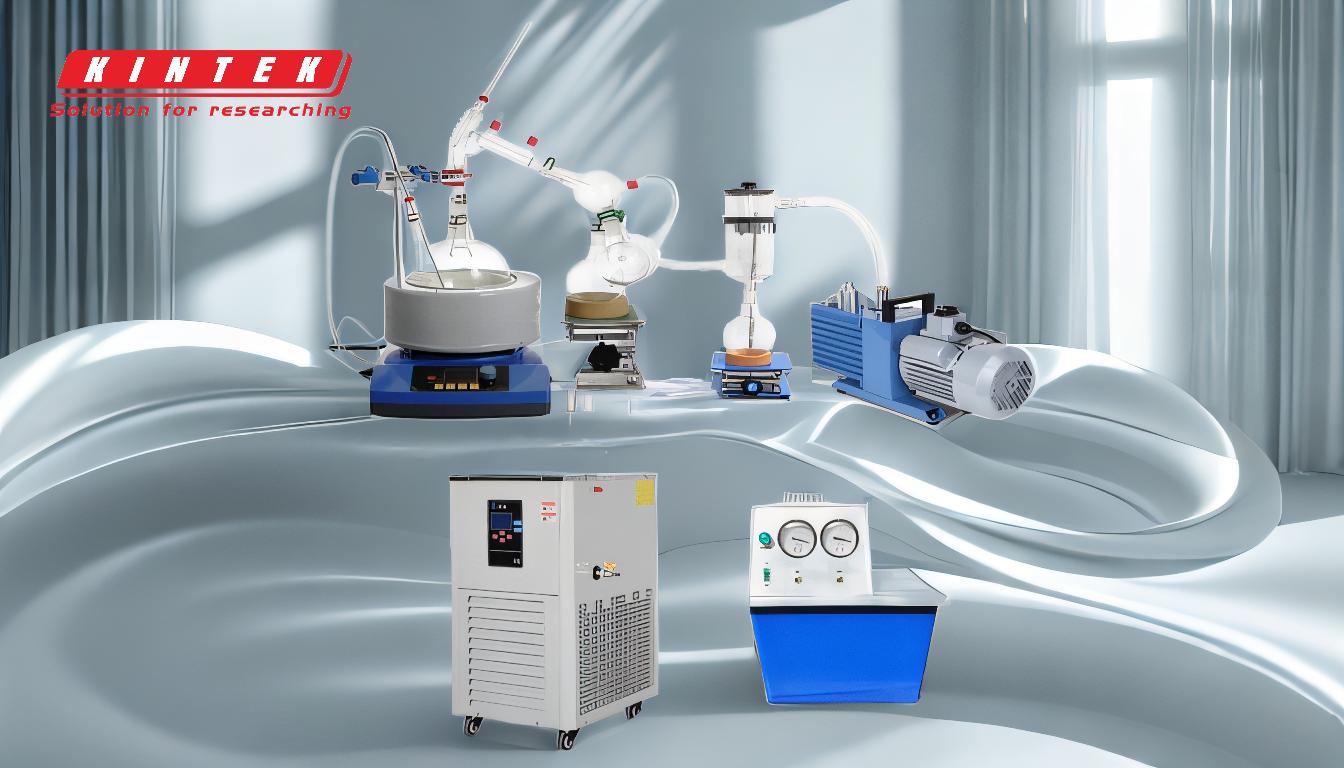Simple distillation is advantageous in situations where the boiling points of the components in a mixture differ significantly, typically by at least 25°C, and when the goal is to separate highly volatile solvents from high-boiling materials. It is a straightforward and cost-effective method that requires minimal equipment, making it suitable for smaller laboratories or locations with limited resources. Simple distillation is particularly useful when the target is to recover either the volatile solvent or the high-boiling residue, and when the purity level required is not extremely high (e.g., 99% purity is not necessary). It is also beneficial when time and efficiency are not critical factors, as it is a slower process compared to more advanced distillation techniques like short-path distillation.
Key Points Explained:

-
Significant Boiling Point Difference:
- Simple distillation is most effective when the boiling points of the components in the mixture differ by at least 25°C. This ensures that the components can be separated efficiently without the need for multiple distillation cycles.
- For example, if you are separating a volatile solvent like ethanol (boiling point ~78°C) from water (boiling point ~100°C), the 22°C difference is sufficient for simple distillation to be effective.
-
Separation of Volatile Solvents from High-Boiling Materials:
- Simple distillation is commonly used to separate highly volatile solvents from high-boiling materials. This is particularly useful in industrial applications where the goal is to recover either the solvent or the residue.
- For instance, in the pharmaceutical industry, simple distillation might be used to recover a solvent like acetone from a reaction mixture containing high-boiling point compounds.
-
Minimal Equipment Requirements:
- One of the key advantages of simple distillation is that it requires minimal equipment. This makes it an attractive option for smaller laboratories or locations with limited resources.
- The basic setup typically includes a distillation flask, a condenser, and a receiving flask, which are relatively inexpensive and easy to assemble.
-
Cost-Effectiveness:
- Simple distillation is a cost-effective method compared to more advanced techniques like short-path distillation. The lower equipment and operational costs make it a practical choice for routine separations where high purity is not a critical requirement.
- For example, in educational laboratories, simple distillation is often used to teach basic distillation principles due to its simplicity and low cost.
-
Suitability for Non-Critical Purity Requirements:
- Simple distillation is suitable when the required purity level is not extremely high. If the goal is to achieve a purity level of 99% or higher, more advanced distillation techniques like short-path distillation would be more appropriate.
- In applications where moderate purity is acceptable, such as in the initial stages of a purification process, simple distillation can be a practical first step.
-
Time and Efficiency Considerations:
- Simple distillation is generally slower and less efficient than more advanced distillation methods. However, in situations where time is not a critical factor, and the goal is to achieve a basic separation, simple distillation can be a suitable choice.
- For example, in small-scale laboratory experiments where the volume of the mixture is small, the slower speed of simple distillation may not be a significant drawback.
-
Ease of Operation:
- The simplicity of the simple distillation process makes it easy to perform, even for those with limited experience in distillation techniques. This ease of operation is particularly beneficial in educational settings or in laboratories with varying levels of expertise.
- The straightforward nature of the process also reduces the likelihood of errors, making it a reliable method for routine separations.
In summary, simple distillation is advantageous in situations where the boiling points of the components differ significantly, the required purity level is not extremely high, and cost and simplicity are important considerations. It is a practical choice for separating volatile solvents from high-boiling materials, especially in smaller laboratories or educational settings.
Summary Table:
| Advantage | Description |
|---|---|
| Significant Boiling Point Difference | Effective when boiling points differ by at least 25°C. |
| Separation of Volatile Solvents | Ideal for recovering solvents like ethanol or acetone from high-boiling materials. |
| Minimal Equipment Requirements | Requires only basic equipment like a distillation flask, condenser, and receiver. |
| Cost-Effectiveness | Lower equipment and operational costs compared to advanced techniques. |
| Non-Critical Purity Requirements | Suitable for moderate purity needs, not for 99%+ purity. |
| Time and Efficiency Considerations | Slower but practical when time is not a critical factor. |
| Ease of Operation | Simple to perform, even for beginners, reducing errors. |
Interested in learning more about simple distillation? Contact us today for expert advice and solutions tailored to your needs!









